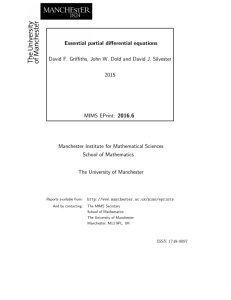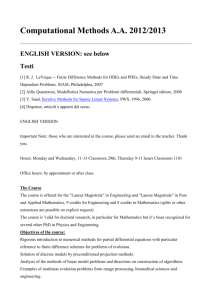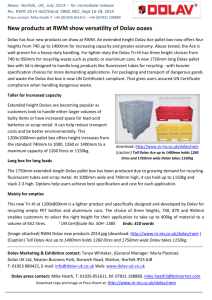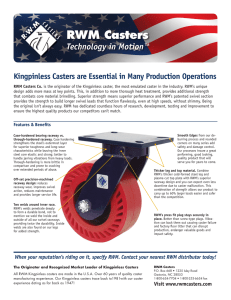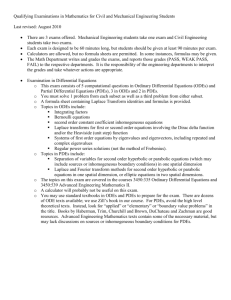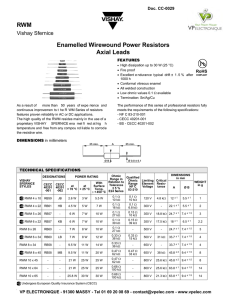ResearchProposal
advertisement
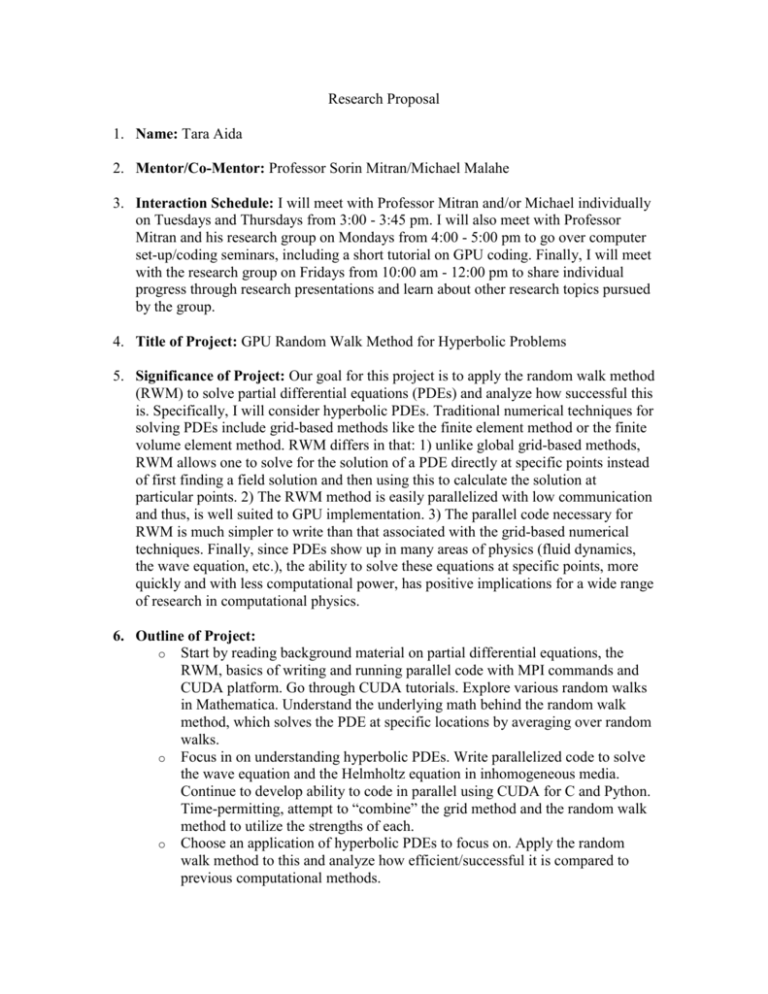
Research Proposal 1. Name: Tara Aida 2. Mentor/Co-Mentor: Professor Sorin Mitran/Michael Malahe 3. Interaction Schedule: I will meet with Professor Mitran and/or Michael individually on Tuesdays and Thursdays from 3:00 - 3:45 pm. I will also meet with Professor Mitran and his research group on Mondays from 4:00 - 5:00 pm to go over computer set-up/coding seminars, including a short tutorial on GPU coding. Finally, I will meet with the research group on Fridays from 10:00 am - 12:00 pm to share individual progress through research presentations and learn about other research topics pursued by the group. 4. Title of Project: GPU Random Walk Method for Hyperbolic Problems 5. Significance of Project: Our goal for this project is to apply the random walk method (RWM) to solve partial differential equations (PDEs) and analyze how successful this is. Specifically, I will consider hyperbolic PDEs. Traditional numerical techniques for solving PDEs include grid-based methods like the finite element method or the finite volume element method. RWM differs in that: 1) unlike global grid-based methods, RWM allows one to solve for the solution of a PDE directly at specific points instead of first finding a field solution and then using this to calculate the solution at particular points. 2) The RWM method is easily parallelized with low communication and thus, is well suited to GPU implementation. 3) The parallel code necessary for RWM is much simpler to write than that associated with the grid-based numerical techniques. Finally, since PDEs show up in many areas of physics (fluid dynamics, the wave equation, etc.), the ability to solve these equations at specific points, more quickly and with less computational power, has positive implications for a wide range of research in computational physics. 6. Outline of Project: o Start by reading background material on partial differential equations, the RWM, basics of writing and running parallel code with MPI commands and CUDA platform. Go through CUDA tutorials. Explore various random walks in Mathematica. Understand the underlying math behind the random walk method, which solves the PDE at specific locations by averaging over random walks. o Focus in on understanding hyperbolic PDEs. Write parallelized code to solve the wave equation and the Helmholtz equation in inhomogeneous media. Continue to develop ability to code in parallel using CUDA for C and Python. Time-permitting, attempt to “combine” the grid method and the random walk method to utilize the strengths of each. o Choose an application of hyperbolic PDEs to focus on. Apply the random walk method to this and analyze how efficient/successful it is compared to previous computational methods. 7. Computer Resources: o For most computation, I will be working on the computer coanda. I have a profile on this computer and can SSH as taraaida@coanda.amath.unc.edu. This is outside CP 451. It has 4 Intel Xeon at 3 GHz with 16 GB RAM. In addition it has a Quadro 4000 with 85 cores and 2G VRAM and a Tesla C1060 with 58 cores and 4 GB VRAM. o We will also use Subversion to share lab logs, results and keep track of different versions of our code. I have access to write to http://mitranlab.amath.unc.edu:8081/subversion/CPU-GPU/Hyperbolic. 8. Literature References: o Chati, M. K., Grigoriu, M. D., Kulkarni, S. S. and Mukherjee, S. (2001), Random walk method for the two- and three-dimensional Laplace, Poisson and Helmholtz's equations. Int. J. Numer. Meth. Engng., 51: 1133–1156. doi: 10.1002/nme.178. o Haberman, Richard. Applied Partial Differential Equations with Fourier Series and Boundary Value Problems (2nd edn). Pearson: Englewood Cliffs, NJ, 2012. o Grigoriu, M.D., Stochastic Calculus. Birkhäuser: Boston, 2002.
